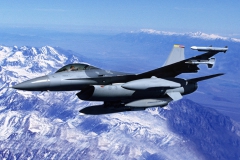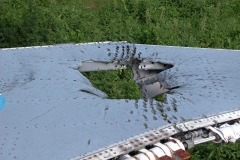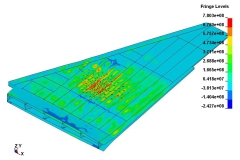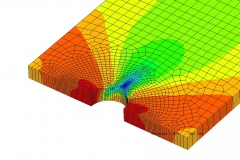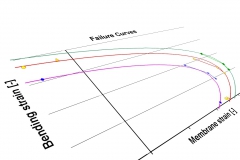TNO – Royal Netherlands Air Force
For the TNO Defence and Safety department a failure model has been developed for aluminium aircraft structures being loaded by fragments and blast from missiles. The fragments penetrate the structure and subsequent blast causes deformation and failure of e.g. fuselage and wings. Combined experimental and numerical methods have been explored in order to gain insight in the failure behaviour of the aircraft materials at high strain rate loading and deformation. Special attention has been paid to influences of:
- Different aluminium alloys
- Bending and tensile deformation
- Strain rate effects
- Perforation size
A significant number of experiments have been carried out focusing on aforementioned effects. Experiments and simulations are applied to define a numerical failure model that was implemented in the finite element code LS-Dyna, allowing for variations of aforementioned parameters. A specialised shell element subroutine provides a failure prediction based on a single element strain data. In this way, the model remains simple and has no effect on the calculation effort for a failure analysis.
The model can be applied in predicting missile effects on aircrafts, residual strength of aluminium structures after missile attack, effects of terroristic threat on structures, etc.
Applied methods & software:
- Abaqus / LS-Dyna, subroutine programming in Fortran
- Experiments on (perforated) samples from F16 fighterjet
